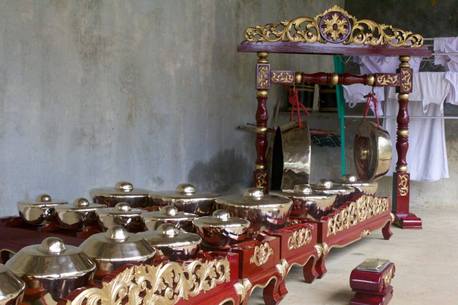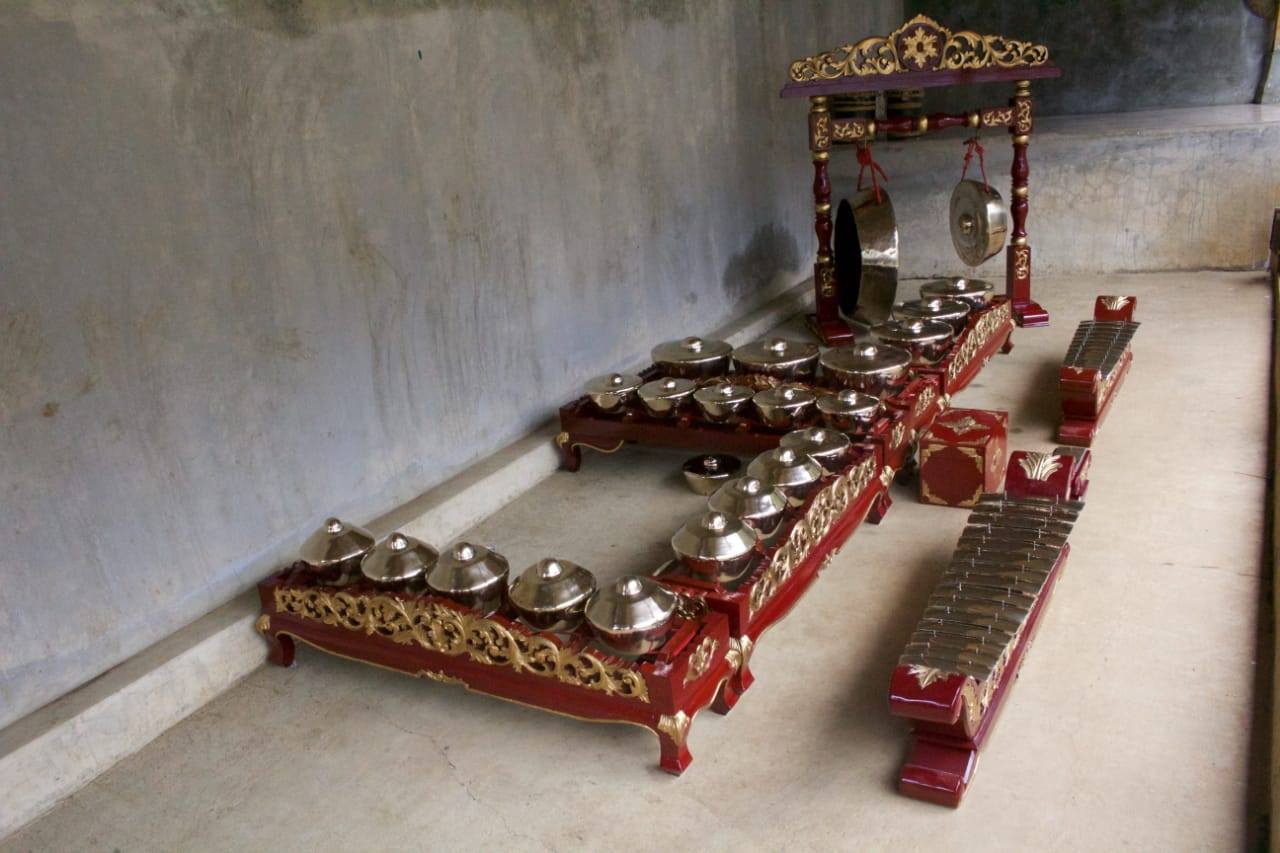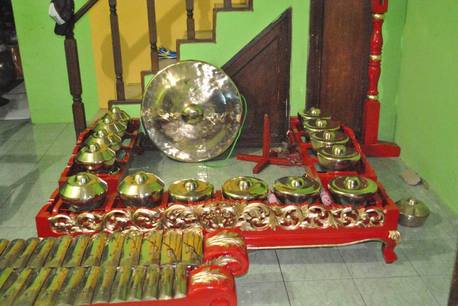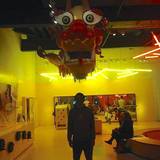
From left to right: Bonang, Jengglong, goong and peking. Photo by Teguh Permana
I spent my time among the Sundanese, the second biggest ethnic group after the Javanese, located in the area that we might call Parahyangan (Priangan from now on), meaning the abode of the gods, a large portion of West Java, extending approximately from Bandung to Garut, Tasikmalaya and Cirebon.
The Sundanese have their own specific set of beliefs, their own costumes and etiquette and, of course, their own music. Of particular interest, at least for me, are the modern styles developed in between Sukarno’s and Suharto’s era, during which Western influenced but also very autochthonous modern genres, such as jaipong and pop sunda, have developed.
To understand these differences, we can start from something less modern, but equally useful: gamelan degung. For this brief account, I will mainly follow the texts and researches done by ethnomusicologists
Sean Williams and
Henry Spiller, which are better, more complete and more extensive texts than I could ever write. I strongly recommend them to anyone interested in Sundanese gamelan music.
Gamelan is imprinted in global imagination as the exotic music of Indonesia. It is known as a sacred and complex style of music, but little, outside of the academic and musical entourages, is really known to wider audiences. To start with, gamelan music can be very “simple” and inclusive. By “simple” I don’t mean easy to play: some of the styles and songs require levels of mastery that take years to be reached. At the same time, in almost all ensembles there are easier and much harder instruments to play and parts to perform. Since in rehearsals groups usually just play the whole sequence of songs without focusing on any specific part, learners can start from fairly easy parts, developing skills and expertise and thus moving to much harder tasks. Gamelan has a very cooperative nature, in which the sum of the parts is much more than the whole.
In this sense, in an ensemble, all members are equally important and everybody collaborates toward a common result. For this reason, the process of playing gamelan allows everyone to play immediately with other people, suggesting the idea that the group as a whole is more important than individuals. This is not to say that gamelan has no hierarchy: instruments are theoretically ordered in a precise power structure, according to which, higher sounds are perceived as of “lower-class”, opposite to bass, to the extent that the gong is often identified with aristocracy.
When we usually talk about gamelan, we do it as if it is a specific genre of music. On the contrary, gamelan, which literally means “bronze percussions orchestra” or, alternatively, “to hit” from the verb gamel, rather refers to an ensemble of instruments and, eventually, to the compositional rules their specific tuning bears. For this reason, according to the place of the ethnic group, we have very different gamelan styles and orchestras, the most well known being Javanese and Balinese ensembles. The differences between styles and approaches - which we have no time to explain in this context - do not only extend and differentiate in space, but also in time, leading recently to more contemporary experiments and results, such as
Gamelan Salukat, led by composer Dewa Alit, Iwan Gunawan’s and Stefan Lakatos’ Moondog for gamelan and, finally,
SambaSunda’s fusion world music tunes.
The gamelan music that inspired SambaSunda’s founder, Ismet Ruchimat, was the traditional Sundanese gamelan degung: an ensemble composed of a flexible set of instruments that may include bonang, panerus and peking (which plays various elaborations on the melody), goong and jengglong (which provide periodic punctuation), a bamboo flute, called suling (responsible for the melody along with bonang) and a set of barrell-shaped drums, called kendang or gendang (responsible to keep the tempo and to provide rhythmic improvisation). This iconic set is known by the name of
degung klasik, classic degung.



